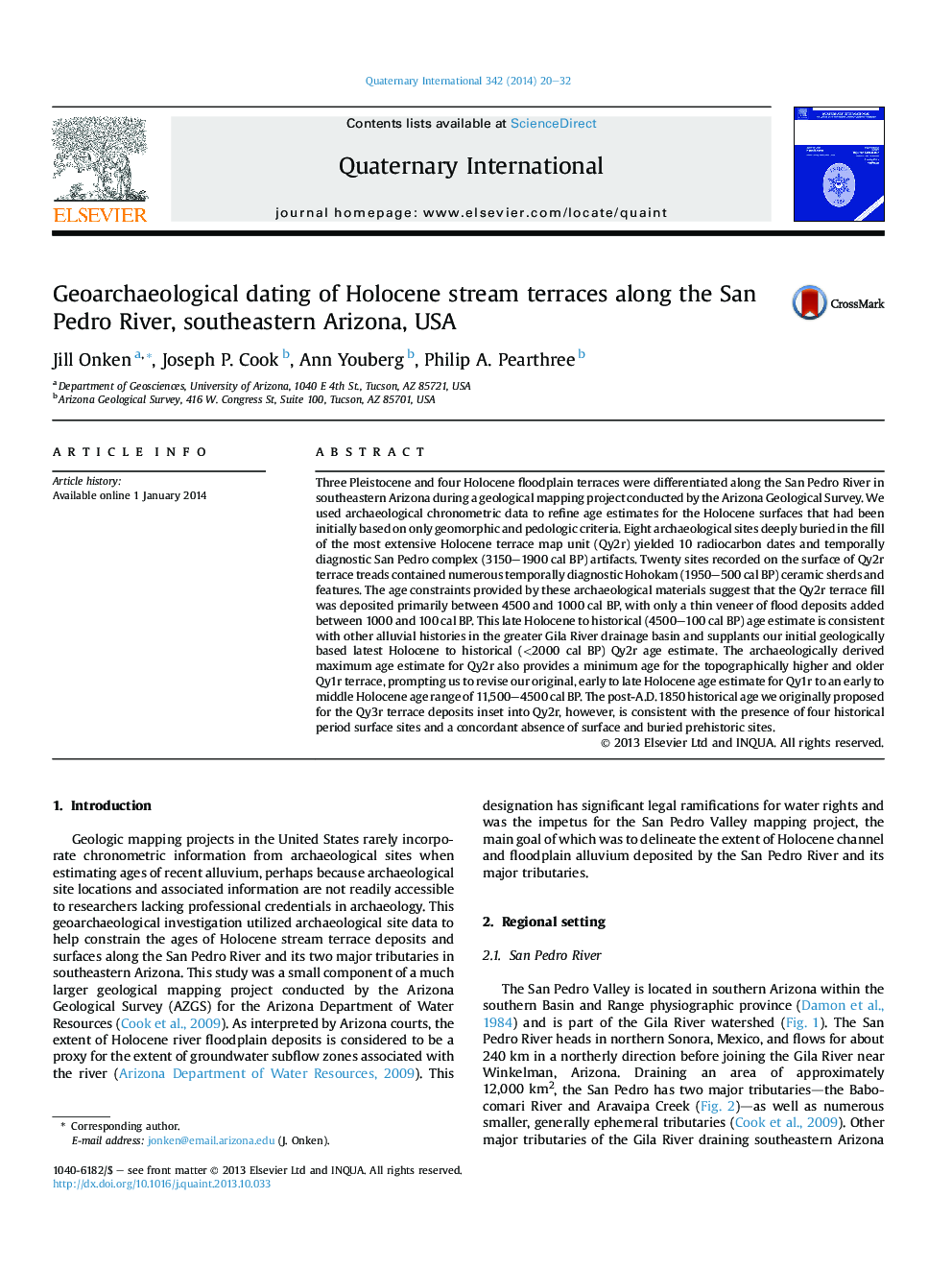| Article ID | Journal | Published Year | Pages | File Type |
|---|---|---|---|---|
| 1041560 | Quaternary International | 2014 | 13 Pages |
Abstract
Three Pleistocene and four Holocene floodplain terraces were differentiated along the San Pedro River in southeastern Arizona during a geological mapping project conducted by the Arizona Geological Survey. We used archaeological chronometric data to refine age estimates for the Holocene surfaces that had been initially based on only geomorphic and pedologic criteria. Eight archaeological sites deeply buried in the fill of the most extensive Holocene terrace map unit (Qy2r) yielded 10 radiocarbon dates and temporally diagnostic San Pedro complex (3150-1900Â cal BP) artifacts. Twenty sites recorded on the surface of Qy2r terrace treads contained numerous temporally diagnostic Hohokam (1950-500Â cal BP) ceramic sherds and features. The age constraints provided by these archaeological materials suggest that the Qy2r terrace fill was deposited primarily between 4500 and 1000Â cal BP, with only a thin veneer of flood deposits added between 1000 and 100Â cal BP. This late Holocene to historical (4500-100Â cal BP) age estimate is consistent with other alluvial histories in the greater Gila River drainage basin and supplants our initial geologically based latest Holocene to historical (<2000Â cal BP) Qy2r age estimate. The archaeologically derived maximum age estimate for Qy2r also provides a minimum age for the topographically higher and older Qy1r terrace, prompting us to revise our original, early to late Holocene age estimate for Qy1r to an early to middle Holocene age range of 11,500-4500Â cal BP. The post-A.D. 1850 historical age we originally proposed for the Qy3r terrace deposits inset into Qy2r, however, is consistent with the presence of four historical period surface sites and a concordant absence of surface and buried prehistoric sites.
Related Topics
Physical Sciences and Engineering
Earth and Planetary Sciences
Geology
Authors
Jill Onken, Joseph P. Cook, Ann Youberg, Philip A. Pearthree,
